The harp is a fascinating musical instrument that was mentioned in several historical contexts and shown on the walls of ancient temples and tombs.
It’s a string instrument that has a number of strings stretched to a soundboard. When the harpist strikes or plucks the strings, a sound is produced.
In this post, we’ll discuss 15 interesting facts about the harp that you probably didn’t know before, so keep on reading.
1. The Harp is One of the Oldest Musical Instruments
The harp is one of the oldest musical instruments in the world and some of the oldest found in burial sites in Sumer (now modern-day Iraq) that are thought to date back to 3500 BC.
During the same period, ancient harps were depicted on the walls of Ancient Egyptian temples and tombs.
2. The Harp Evolved in Several Parts of the World
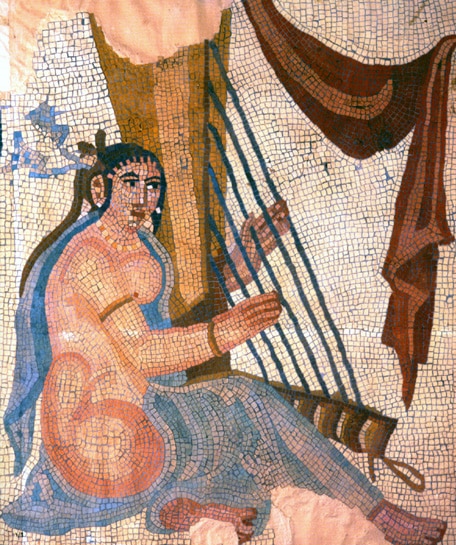
The harp evolved in near west Asia, around modern Iraq and Iran, probably evolving from an ancient ancestor called the chang.
The chang was common in which was Persia till the 19th century.
During this period, the harp evolved from being a handheld instrument to a larger one that could be played while sitting or standing.
In South Asia, the ancient veena was the harp’s ancestor, where it was shown on ancient coins.
Despite being extinct in Modern Chinese music, the harp was quite common in ancient China and neighboring regions around 500 BC.
In Europe, the lyre, the harp’s European ancestor, was shown as early as 1400 BC, although the remains of an older one were found in the Isle of Skye in Scotland.
3. Over the Years, The Look of Harps has Changed Significantly
In Ancient Egypt, a harp usually looked like a bow with very few stretched strings, and the player rested the bow on their knees or played the harp while standing.
Images of the bow harp can be found in the tomb of the Egyptian Pharaoh Ramesses III, and it had about 19 strings.
These harps were called open harps because they lacked a pillar to support the strings.
In Asia, ancient harps were usually lighter as they were angular. However, they lost their rigidity.
Asian harps were played upside down, compared to the way modern harps are played.
The Irish harp, or the frame harp, was invented around the year 800 AD, and it contained the first fore pillar.
This one evolved to what we know as the diatonic harp, which was invented in the 19th century and had about 24 strings fixed to a soundboard with wooden pegs for adjustment.
4. There are Several Types of Harps Today
Today, there are mainly two types of harp, the lever, and the pedal harp.
The lever harp is diatonic and contains levers that raise the string by a semitone. These are common among beginners because they’re easier to play.
Lever harps are usually smaller and are suitable for folk music.
A pedal harp is chromatic and has pedals that are able to raise the string by two semitones.
These harps are more suitable for advanced classical music.
Other less common types include the Latin American harp, Celtic harp, Electric harp, and even the harp guitar.
5. The Modern Harp has 47 Strings
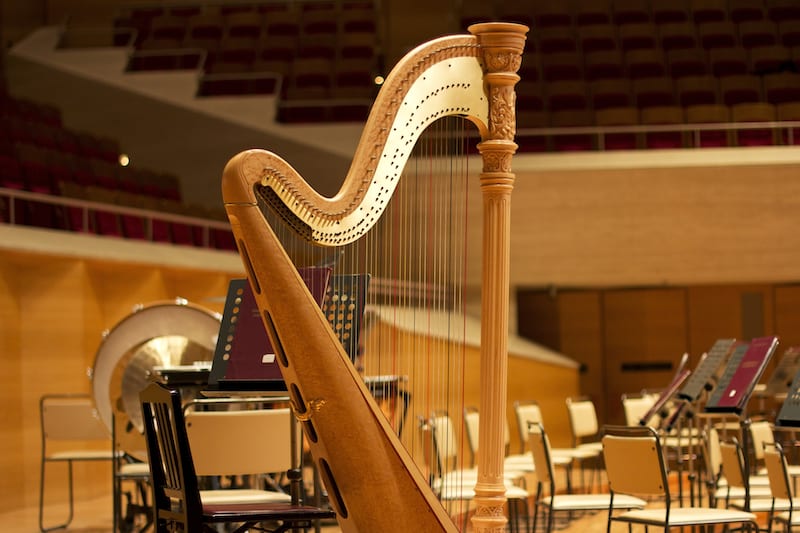
After evolving throughout the years, the modern pedal harp reached its current shape, where it has 47 strings.
However, unlike a piano, the harp doesn’t have white and black keys. Instead, it has 7 pedals.
The strings are usually made of metal, where the lower ones are made of steel, and the other ones are made of gut.
In some cases, the highest strings are made of nylon.
While the harpist is playing the harp, he or she will press those pedals to change the notes produced by the strings.
The pedals sharpen or flatten the notes of the same strings.
A lever harp has between 22 and 36 strings, although some harps can have as many as 40 strings.
These are usually cheaper and easier to carry.
6. The Most Famous Harp Player is King David
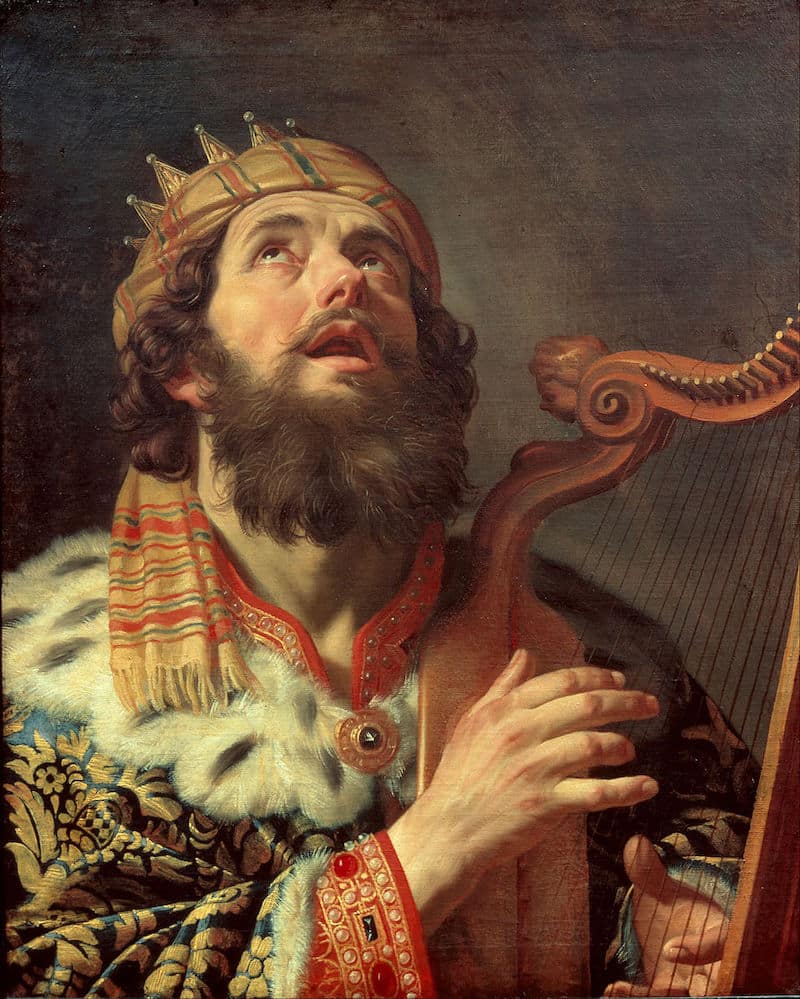
The Biblical King, King David, is probably the most famous harpist in history.
He composed psalms, and some scholars believe that he’s responsible for the design of the modern harp as we know it today.
There are 66 bible verses about the harp.
Other famous modern harpists include Alice Coltrane, Loreena McKennitt, Joanna Newsom, Andreas Vikkebweider, and Valérie Milot.
7. The Name Harp is German
The name harp comes from the word Harpa, a word of Anglo-Saxon, Old German, and Old Norse origin.
It simply means to pluck and refers to how the musical instrument is played.
8. The Harp is Played Using Only Four Fingers on Each Hand
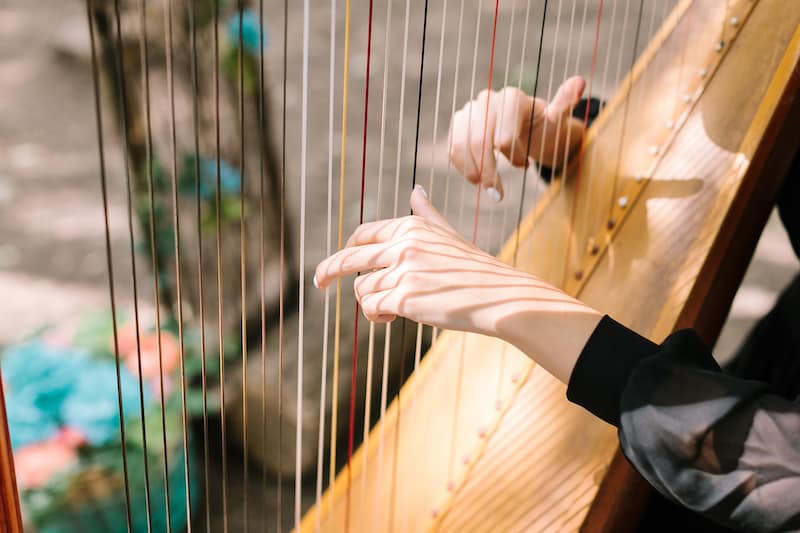
The harp player uses only the thumb and the first three fingers to pluck the strings.
The strings are played at an angle and are let go, so they rest into the palm.
A harpist will usually tune the harp’s string before a performance.
It usually takes about an hour to test and tune all the strings on a 47-string harp.
9. The Harp is Like the Piano When it Comes to Musical Notation
In musical notation, the harp is notated in two staves called the grand staff, just like a piano.
The pedaling is usually done by the harpist, although some composers will show it.
The notes are usually marked m.d for the right-hand notes and m.g for the left-hand notes.
10. There Are Different Techniques to Playing the Harp
The main techniques are either striking or plucking the strings of the harp.
Each one of these techniques contains several sub techniques affecting how the music is produced.
A plucking technique is more common and is used in classical music.
It gives the player more control over the tone and volume and is easier to master.
This technique subdivides into different sub techniques, including the Xylo and the pince technique.
A striking technique is more common in folk music.
It gives the harpist more freedom, so they can move from one string to another as the fingers don’t have to grab a string.
This technique subdivides into other methods, including the nail technique, which is quite common in Ireland.
In this method, the harpist strikes the string with the nail, not the finger.
11. It Takes About 3 Years to Master the Harp
If you want to play the harp, you should practice regularly, usually about 2 or 3 times a week, where a session lasts for an hour.
Compared to other string instruments, the harp is actually easier because there’s no bowing or fretting.
Also, it uses only 8 fingers, compared to a piano that uses all 10.
Being an easy instrument to master explains why the harp was widespread in ancient cultures.
12. Harp Is Played In Different Music Genres
Despite being associated with folk and classical music, you can find the harp in several music genres, including the blues, jazz, R&B, and Reggae genres.
The harp also found its way into several rock songs.
13. It’s Easier to Play the Harp While Sitting
Sitting while playing the harp puts you in a relaxed position since you can reach all the strings without hunching over.
Since a modern harp is about 6 feet high, you’ll be able to reach all the notes with a chair of an adequate height.
Some players prefer to play the modern harp while they’re standing, as this position gives them more control.
Smaller harps or practice harps can either be placed on the lap or on a box, so you can elevate the instrument.
If the instrument is too low, hunching over can cause neck and back problems.
14. You Have to Tilt a Lever Harp
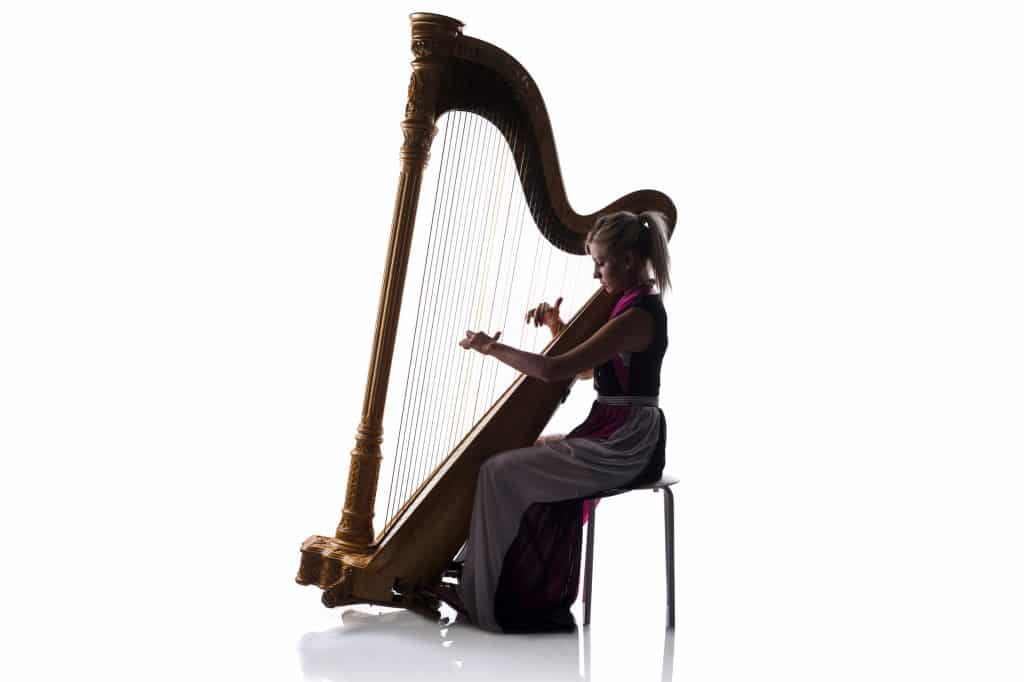
A lever harp has a wide soundboard, so the harpist has to tilt it to reach all the strings.
A harpist usually sits with their legs spread a little to accommodate the width of the harp.
You can sit on the side of a pedal harp, so you can see the strings better.
15. A Harp is Quite Expensive
Compared to other string instruments, a harp is usually more expensive.
For example, a lever harp can cost between $2500 and $5000, while the cost of a pedal harp can be as much as $150,000.
However, you can get a beginner’s harp for practice purposes that would cost as little as $100 or $300.
This is why some harpists choose to rent harps first, give them a try, and only buy them when they’re sure about them.
The Louis XV Special is the most expensive harp, and it shows engravings of flowers, leaves, and shells carved into the 23+ karat gold leaf.
You can buy this harp with its cover set for the whopping price of $189,000.
Summing Up Harp Facts
A harp is actually one of the easiest musical instruments you can learn, which probably explains its popularity in several ancient civilizations.
The majestic sound of the harp made it even popular in modern music genres.
If you’re interested in playing the harp, this article can be your starting point to dig a little bit more into the secrets of this musical instrument.
